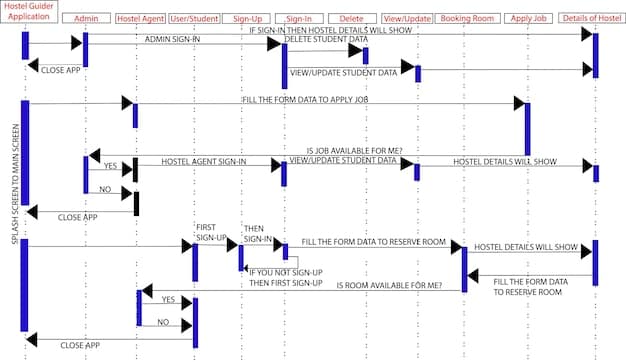MVP on a Shoestring: Launching in 3 Months with $5,000

Building a Minimum Viable Product (MVP) on a limited $5,000 budget and launching it within 3 months requires meticulous planning, strategic prioritization of features, leveraging cost-effective tools, and a relentless focus on customer feedback to validate assumptions and iterate quickly.
Embarking on the journey of building a Minimum Viable Product (MVP): Launch in 3 Months on a $5,000 Budget may seem daunting, but with a strategic approach, it’s entirely achievable. This guide provides a roadmap to navigate the challenges and maximize your resources.
Understanding the MVP Concept
The concept of a Minimum Viable Product (MVP) is crucial for startups looking to test their ideas without overspending. It’s about getting the core features right before investing in additional functionalities.
What is an MVP?
An MVP is not just a product with minimal features; it’s a version of your product that allows you to collect the maximum amount of validated learning about your customers with the least effort. It’s about testing your core assumptions with real users.
Why Start with an MVP?
Starting with an MVP helps reduce the risk of building something nobody wants. It allows for faster iteration, saves resources, and provides valuable insights early in the development process.
- ✅ Validate your business idea before committing significant resources.
- 💰 Reduce development costs by focusing on essential features.
- 🚀 Get your product to market faster and gain a competitive edge.
👂 Collect early user feedback to guide product development.
By focusing on the MVP approach, you can ensure that you’re building a product that meets the needs of your target audience, all while staying within your limited budget.
Planning Your MVP Within a $5,000 Budget
Planning is paramount when working with a tight budget. Every dollar must be allocated strategically to ensure the most impact. This involves defining your target audience, identifying key features, and selecting cost-effective tools.

Define Your Target Audience
Understanding your target audience is the first step. Who are you building this product for? What problems are you solving for them? The more you know about your audience, the better you can tailor your MVP to their needs.
Identify Key MVP Features
List all the features you envision for your product and then prioritize them. Focus on the core functionality that solves the primary problem for your target audience. These are the features that will make it into your MVP.
Choosing the right features for your MVP is about balancing your vision with what is realistically achievable within your budget and timeline. Think critical functionality, not bells and whistles.
Choosing the Right Tech Stack
Opt for a tech stack that is both affordable and efficient. Open-source technologies, low-code or no-code platforms, and cloud-based services can significantly reduce development costs.
- 💻 Use open-source technologies like Python, JavaScript, or PHP to avoid licensing fees.
☁️ Leverage cloud platforms like AWS, Google Cloud, or Azure for scalable and cost-effective hosting.
🚀 Consider no-code tools like Bubble or Adalo for rapid prototyping and development.
Proper planning and selection of tools can transform your vision into reality within your financial constraints.
3-Month Timeline: Key Milestones
A structured timeline is essential to keep your project on track. Breaking the 3-month period into manageable milestones will help you stay focused and make necessary adjustments along the way.
Month 1: Research and Planning
The first month should be dedicated to thorough research, detailed planning, and setting up the necessary infrastructure. This includes market research, competitor analysis, and defining the scope of your MVP.
Month 2: Development and Testing
The second month is all about development and testing. Focus on building the core features of your MVP and rigorously testing them to identify and fix bugs. Aim for a functional prototype by the end of this month.
Month 3: Launch and Feedback
The final month is dedicated to launching your MVP and gathering feedback from early users. This feedback will be invaluable in guiding future iterations and improvements to your product.
Adhering to a strict timeline not only keeps your project organized but also encourages you to make efficient use of your limited budget.
Cost-Effective Development Strategies
To stay within a $5,000 budget, you need to employ cost-effective development strategies. This includes leveraging free resources, outsourcing strategically, and prioritizing essential features.

Leveraging Free Resources
Many free resources are available to help you build your MVP. These include free software, online courses, and community support forums. Make full use of these resources to minimize costs.
Strategic Outsourcing
Outsourcing certain tasks can be more cost-effective than hiring full-time employees. Platforms like Upwork and Fiverr offer access to affordable freelancers with a wide range of skills.
Prioritizing Essential Features
Focus on building only the essential features of your MVP. Avoid scope creep and resist the temptation to add unnecessary functionalities. The goal is to validate your core assumptions, not to build a perfect product.
- 🎯 Focus on core features to validate assumptions.
💸 Leverage free resources and tools wherever possible.
🤝 Outsource strategically to access specialized skills affordably.
By adopting these strategies, you can effectively manage your budget and ensure that your MVP is built within your financial constraints.
Testing and Iteration: The Path to Success
Testing and iteration are critical components of the MVP process. Gathering feedback from early users and using it to improve your product is essential for long-term success.
Gathering User Feedback
Collect feedback from your early users through surveys, interviews, and user testing sessions. Pay attention to what they like and dislike about your product, and use this feedback to guide your next iteration.
Analyzing Data
Use analytics tools to track user behavior and identify areas for improvement. Analyze data on user engagement, conversion rates, and churn to understand how users are interacting with your product.
Iterating Based on Feedback
Use the feedback and data you collect to iterate on your product. Make changes to the features, design, and functionality based on what you learn from your users. The goal is to continuously improve your product based on real-world usage.
Continual testing and iteration transform an MVP into a viable product in the market.
Common Pitfalls to Avoid
Building an MVP on a limited budget comes with its own set of challenges. Being aware of common pitfalls can help you avoid costly mistakes and stay on track.
Scope Creep
Scope creep, or adding features beyond the original MVP definition, can quickly derail your project and deplete your budget. Stick to the core functionality and avoid adding unnecessary features.
Ignoring User Feedback
Ignoring user feedback is a surefire way to build a product that nobody wants. Pay attention to what your users are saying and use their feedback to guide your development efforts.
Lack of Planning
A lack of planning can lead to wasted resources and missed deadlines. Take the time to thoroughly plan your MVP before you start building.
Avoiding these pitfalls is critical to the success of your MVP and the long-term viability of your product.
| Key Aspect | Brief Description |
|---|---|
| 💡 MVP Definition | Focus on core features; gather maximum learning. |
| 💰 Budget Planning | Strategic resource allocation; prioritize needs. |
| 🕒 Timeline | Research (Month 1), Development (Month 2), Launch (Month 3). |
| 👂 Feedback | Collect, analyze, and iterate based on user input. |
Frequently Asked Questions
▼
An MVP is a version of your product with just enough features to attract early-adopter customers and validate a product idea early in the development cycle. It’s not a fully finished product.
▼
Focus on essential features, use free tools and resources, consider outsourcing strategically, and prioritize a lean approach to development and marketing to stay within budget.
▼
One of the most significant challenges is scope creep. It’s crucial to stick to your core MVP features and avoid adding unnecessary functionality that can quickly drain your limited resources.
▼
User feedback is absolutely critical. It validates your assumptions and guides your future development efforts. Make sure to collect and analyze user feedback regularly to improve your product.
▼
Utilize social media, content marketing, email marketing, and partnerships to reach potential users without spending a lot on advertising. Focus on organic growth strategies.
Conclusion
Building an MVP in 3 months with a $5,000 budget demands rigorous planning, strategic prioritization, and relentless focus. By embracing cost-effective strategies and valuing user feedback, entrepreneurs can successfully validate their ideas and lay a strong foundation for future growth.





